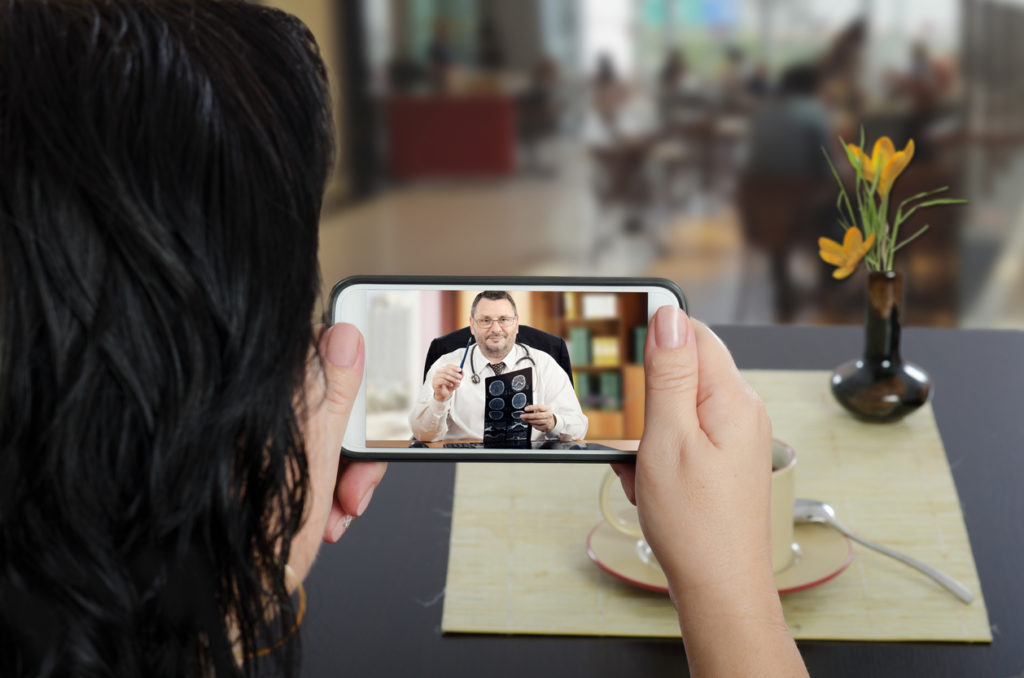Telemedicine and telehealth have been around as concepts for decades, but it was only recently, with the COVID-19 pandemic, that it was implemented and has really started to take off. Currently, healthcare professionals can hold appointments and sessions via everyday messaging systems, like the phone or on Skype (or Zoom). Though these rules may be repealed in due time, they will be repealed because a stronger, more secure communication method designed specifically for the healthcare sector is needed.
What is Telehealth?
Telehealth is, quite simply, providing care remotely to patients. The levels of care vary as well. From online appointments to remote monitoring, the possibilities and applications of telemedicine for diabetes are immense. Potentially telemedicine can be used to provide a better quality of care and greater levels of healthcare monitoring for those who have advanced conditions from heart disease to cancer.
For telemedicine to truly flourish, a combination of professional care and also automation is going to be essential. The automation in question does not need to be highly advanced. Mostly it will be used to monitor vitals so that it can notify healthcare practitioners when an anomaly or degradation in condition occurs.
What this means is that a smartwatch that can monitor your vitals can connect to your healthcare professionals and provide essential information that can help you live more independently, even with a health condition. You would only need to go in if there was an issue.
On the other side of the spectrum is the remote access to healthcare professionals. Not only will this help connect more patients to the care they need on their own schedules, but it will be instrumental in bridging the gap of care currently experienced by rural and low-income areas.
Telehealth currently looks like remote appointments and digital communicative care, but where it can go is immense. Telemedicine is set to solve a lot of issues while simultaneously providing better, preventative care to a wider number of patients everywhere.
What are the Benefits of Telehealth?
There are many benefits to telemedicine, with the most prominent benefit being its accessibility. Just as healthcare has changed and adapted and now looks very different to even a hundred years ago, telemedicine is set to become the go-to medical tool when it comes to providing everyday and preventative care to a greater number of people.

Faster and Better Access to Healthcare
Accessibility is one of the best reasons to adopt telemedicine more widely. Currently, there are many Americans (much less those living around the world) who do not have adequate access to healthcare. When you have to drive an hour or more in order to go for a check-up, chances are you won’t go. Healthcare should never be solely for when things get bad enough to warrant a visit; it should be done with prevention as the name of the game.
The accessibility in question isn’t just for those who live in rural areas and have a lack of healthcare options, either. Those who have weak immune systems or other healthcare concerns that make it dangerous or difficult to make long trips will also benefit. The same applies to those with mental health conditions that may make it difficult to leave or manage a routine.
Telemedicine applies to many different types of healthcare as well, from primary care to mental health services. Being able to access the care that you need right from your own home (or work) is a great way to make healthcare more accessible to all.
Improved Healthcare Monitoring
In the future, renting or buying medical monitoring tools will become as normal as having a fire extinguisher or locks on your doors. Making it normal for patients to be able to monitor their own health and then send the results to the doctor is the best way forward, as it can help healthcare professionals monitor your baseline. As a result, people will immediately know when their condition worsens or gets better. Enjoy greater levels of freedom than you ever knew before while enjoying the comfort that your medical doctor is monitoring your health with minimal influence on the patient’s part.
Imagine being able to find and monitor for cancer cells before they become even close to being a problem. Imagine being able to tell the moment your health or condition worsens. Monitoring is one of the best tools for those who have a health condition and can even be used for those who are otherwise perfectly healthy. With telemedicine, advanced monitoring can be made easy, and more importantly, it can stay secure.
Lower Costs for Medical Institutions
On the healthcare side is the lower costs. In one study, it was determined that telemedicine services resulted in significant expense savings. Telemedicine brought a $1500 hospital visit cost down to $300. When it comes to patient visits, the cost went from $120 down to $19. Not only are healthcare providers experiencing lower expenses, but they also found that 84% of patients are more likely to choose a healthcare option that includes telemedicine.
Telemedicine services are also well-liked, with around 77% of patients satisfied with their virtual care.
Finally, costs are saved simply due to the fact that fewer healthcare professionals are needed to care for a larger population base. Though more providers is, of course, always the goal, currently, there is a shortage of primary care physicians that can make it difficult to provide every patient with equal access to quality care. By offsetting a lot of the admin and hiccups between visits, physicians and FNPs everywhere can give them their time and energy back.
Improved Quality of Care (and Life)
For the physicians and nurses that will be providing the care services remotely, telemedicine could mean greater flexibility and a better work/life balance than ever before. Not every clinic is going to close at a regular time, yes, but being able to cuddle up at home between calls or patients can make a massive difference to how you feel.
Working remotely can mean enjoying a better quality of life as well. Nurses and physicians can move away from the in-demand areas. If you thrive in a small town or amongst nature, then you can have it all by working as a telehealth nurse.

What is Holding Telemedicine Back?
There are a few hiccups in the universal adoption of telehealth services. It is important to be aware of these, and they are as follows:
Privacy Concerns
Currently, programs like Skype or Zoom can be used without breaching HIPPA rules, but that won’t remain true for long. With $29 million per year for the next few years in investment, however, new tools and infrastructure should be designed and implemented that provide greater levels of service and privacy for both patients and medical workers.
Lack of Insurance Coverage
Insurance coverage is another key issue, though this one will hopefully be resolved in short order as it becomes more pervasive and as the various healthcare insurance providers compete with one another. Currently, however, not every healthcare insurance provider offers telehealth coverage, meaning that though it is a great way to increase accessibility for everyone, it has not yet become a financially accessible option for all.
Lack of Healthcare Professionals
Telemedicine does have the potential to ease workloads so that fewer healthcare professionals can take on a greater number of patients without overloading themselves or their time. Though this is a possibility, more primary care professionals are needed to tackle the in-person patients as well as the remote patients. Leading the way towards this new future are some very talented telehealth nurse practitioners who have adapted their experience and qualifications to suit the digital world.
By combining their know-how with new bedside manners designed for the digital world, these FNPs are leading the charge and will be instrumental in providing greater levels of care for remote and rural patients who traditionally would either not have had access or have had poor access options.
What’s Next for Telemedicine and Telehealth
There are so many exciting futures for telemedicine ahead. To start, CARES is expected to invest $29 million per year for the next four years to develop and expand the telehealth infrastructure. This will help provide better levels of care and also security when providing telehealth services to patients.
Improving the infrastructure of telemedicine is the first step. It is the platform from which all other benefits and opportunities can be built from. In the future, the laws and rules surrounding telehealth will be solidified, and standards will be measured so that healthcare professionals can better structure their plans and ideas.
There is a lot of innovation coming, and with that innovation, a whole new world of possibilities. Everyone knows how important it is to catch signs of cancer, or heart disease, or any number of conditions early. Not catching something early enough could mean losing the right before you are even ready.
Telemedicine is the way forward, and with that new path come many great new opportunities, jobs, and potential for healthcare as a whole.
